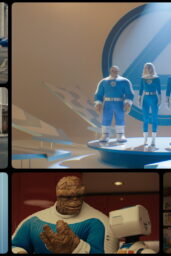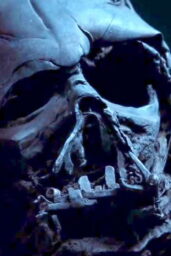If there's one thing James Cameron understands, it's scale. The man who made us fear the liquid metal of Terminator 2, hold our breath during Titanic's sinking, and marvel at Pandora's floating mountains in Avatar is at it again. With Avatar: Fire and Ash, the third chapter in his sci-fi epic, Cameron isn't just raising the stakes—he's igniting a war that could make The Way of Water's finale feel like a backyard brawl.
The Art of Topping Oneself
Cameron's career has been a series of self-imposed one-upmanships. Aliens out-terrified Alien. Titanic out-sobbed every romance before it. Now, Fire and Ash aims to out-battle its predecessors. Production designer Ben Procter teased to Empire that the film's airborne and waterborne clash will dwarf The Way of Water's aquatic showdown, calling it “nothing but a skirmish” in hindsight. The RDA's new weapon—a gargantuan factory ship designed to harvest tulkun on an industrial scale—evokes Cameron's love for melding ecological horror with action. Imagine Mad Max: Fury Road meets Free Willy, but with more explosions and space whales.
The introduction of the Ash People (fire Na'vi) and Air Traders adds fresh dynamics to Pandora's lore. Yet, the heart of this saga remains its human (and Na'vi) cost. Procter hints at a war of “scale we have not seen before,” blending the aerial chaos of Avatar's floating mountains with The Way of Water's oceanic fury. But spectacle without soul is just noise—and Cameron knows this.
The Shadow of Loss
The article's most haunting question isn't about battle choreography but mortality. With Lo'ak (Jake Sully's son) taking over narration and Cameron's admission that Fire and Ash could serve as a series finale, the odds of a major death feel high. Will Jake Sully, the reluctant hero turned tribal leader, sacrifice himself? Could Payakan, the emotional anchor of The Way of Water, become collateral damage in the RDA's mechanized slaughter?
Zoe Saldaña's Neytiri, the series' ferocious soul, seems safe—for now. But Cameron has never shied from tragedy. Remember Titanic's frozen lovers or Sarah Connor's PTSD in Terminator 2? This battle might leave Pandora scarred, setting the stage for a darker, more fractured world in Avatar 4 and 5.
Cameron's Paradox: Spectacle vs. Story
Herein lies Cameron's genius—and his challenge. His films are technological marvels, but they resonate because they're deeply human. Fire and Ash risks becoming a victim of its own ambition if the spectacle overshadows the Sully family's intimate struggles. Yet, if anyone can balance 80-foot waves with 8-foot-tall blue aliens grappling with parenthood and legacy, it's Cameron.
The Box Office Behemoth
Financially, Fire and Ash is a guaranteed juggernaut. The first two Avatar films grossed over $5 billion combined, and this chapter's promise of “the mother of all battles” will lure audiences back to theaters. But Cameron's true test is ensuring Pandora remains a place we want to return to—not just a theme park ride, but a world that mirrors our own fears of colonization and environmental collapse.
Personal Impressions
Cameron's relentless push for bigger, brasher cinema is admirable, but Fire and Ash feels like a tipping point. The factory ship's grotesque scale—a literal engine of extinction—is a brilliant metaphor for human greed, yet I worry the film's emotional beats may drown in its CGI tsunami. Still, Cameron's track record suggests he'll deliver. The man made us cry over a sinking ship and root for a blue cat-man; betting against him feels unwise.
Do you think Cameron's focus on scale risks losing the heart of the story, or is monumental spectacle essential to the Avatar experience?











